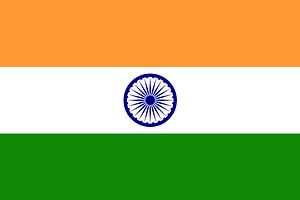As the world’s largest democracy gears up to head to the polls starting next month, it’s worth taking a step back and appreciating both the logistical and institutional aspects of what keeps Indian democracy ticking. Fellow Pulse columnist Ram Mashru took a look at the record-breaking nature of India’s elections earlier, noting that India’s upcoming election will be the “largest democratic event in history, with more than 814 million people entitled to vote.” India’s democratic institutions can appear opaque and labyrinthine to outsiders, but the constitutional process that allows 814 million people to select their next government is actually rather simple.
At the core of it, when Indians head to the polls, they will be electing members of the 16th Lok Sabha, or the lower house of India’s bicameral legislature (the upper house being the Rajya Sabha). The Lok Sabha — the House of the People — contains 545 seats and the general elections will send politicians from across India to fill 543 of those seats. The President of India, under the constitution, will appoint two representatives to fill the remaining two seats. Lok Sabha elections take place on five-year intervals. The last general election in India took place in 2009 with 714 million eligible to vote (dwarfing the combined electorates of both the United States and Europe).
In the Indian system, fashioned after the British Westminster system, the prime minister is the head of Government and is appointed by the Lok Sabha, rather than elected directly by voters as is common in presidential systems. The party holding a majority in the Lok Sabha elects its leader prime minister. In the case of Prime Minster Manmohan Singh and the Congress Party, party leader Sonia Gandhi yielded to Singh for a multitude of reasons. Should no party possess a simple majority, different parties will form coalitions until they acquire the requisite number of seats to elect a prime minister successfully. An important feature of India’s prime ministerial election process is that all candidates have to be either a member of the Lok Sabha or Rajya Sabha, meaning that they contest elections for a particular seat from within a particular locality. For example, the BJP’s prime ministerial candidate Narendra Modi recently stated that he will contest his parliamentary seat from Varanasi. The president of India is the head of state and is elected by the 545 members of the Lok Sabha, 238 members of the Rajya Sabha and India’s various state assemblies.
In the upcoming Indian general elections, data suggest that the incumbent Congress Party will likely suffer a major loss of seats in the Lok Sabha. However, the primary opposition party — the Bharatiya Janata Party (BJP) — does not appear to be poised to win a simple majority with ease (272 seats constitute a majority). Despite the dominance and polarization of national politics between the Congress and the BJP, the Indian political scene is remarkably pluralistic with a plethora of political parties with different ideological and regional affiliations. Although India has over 1,500 claimed political parties, six are recognized as valid national parties and an additional 47 as state parties. Thirty-nine parties are currently present in India’s 15th parliament. No party has won a simple majority in India since 1989, ensuring that coalitions have played a major role in legislative politics. The United Progressive Allianced (UPA) coalition, lead by the Indian National Congress, has been in power for 10 years now.
Coalition politicking generally takes place after election results have been announced. In 2014, the votes will be counted and announced on May 16 by the politically independent Election Commission of India. Parliamentarians will have but a couple weeks after that date to negotiate coalitions and elect a prime minister. Generally, coalition politics remain somewhat in flux. The current UPA coalition, for example, lost its parliamentary majority in mid-2013 but continues to receive ad hoc support from certain parties. Should the BJP emerge with a plurality in parliament after the elections, it will have to wrangle with coalition partners — generally, this has somewhat of a moderating effect on the agendas that political parties are able to pursue in the Indian legislature.
That concludes my quick primer on India’s electoral process. The 2014 elections will be historic and will almost certainly usher in some political change in India. Stay tuned as our bloggers here at The Pulse and elsewhere on The Diplomat will be watching events in India closely.

































